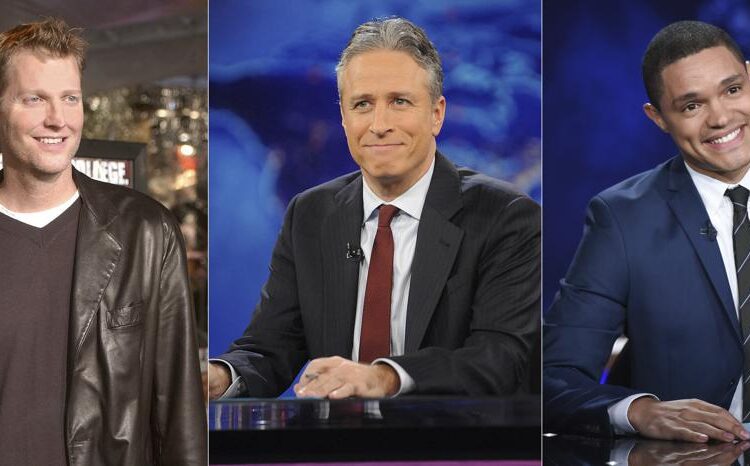NEW YORK — Long before there was fake news, there was a fake news show.
Comedy Central’s “The Daily Show” launched 25 years ago this month, dedicated to skewering journalism and warning viewers about how they take in their news, AP reported.
“We became the watchdogs of the watchdog,” said co-creator Lizz Winstead. “Nobody had done it before so the world was our oyster.”
Over the years, “The Daily Show” — first hosted by Craig Kilborn, then Jon Stewart and now Trevor Noah — has skewered the left and right by making the media a character and playing it absolutely straight, no matter how ridiculous.
Co-creator Madeleine Smithberg explains their a-ha moment: “What if we pretend we are them? And the more serious we act, the absolute more ridiculous we can be? We can satirize the news industry along with the news.”
Winstead and Smithberg are celebrating the silver anniversary on Monday with a 90-minute streaming celebration that will include special guests, a Q&A and appearances from the first correspondents: A. Whitney Brown, Beth Littleford and Brian Unger.
While Winstead left as head writer before Stewart took over as host in 1999, Smithberg stayed for more than seven years, hiring such key talent as Stephen Colbert, Steve Carell, Ed Helms, Rob Corddry, Mo Rocca and Lewis Black.
The co-creators built a show that would go on to win dozens of Emmys, two Peabody Awards and honors from the Writer’s Guild, the NAACP and GLAAD. They established a format that proved sturdy enough to outlast various hosts.
“They got to just move into the house and not worry about the plumbing and not worry about the roof. What they could just do is start decorating and then start adding to it and then just really having the parties they wanted,” said Winstead.
The show was an evolutionary leap from previous attempts to skewer news like “That Was the Week That Was,” “Weekend Update” on “Saturday Night Live” and HBO’s ”Not Necessarily the News.” But despite its popularity and endurance, neither co-creator sees much change in the way TV news operates.
“We couldn’t have handed the media a bigger mirror with which to look at themselves and say, ‘I guess we need to self-correct,’” said Winstead. “And instead, a lot of cable news was like, ’Oh, what people want in the news is wacky graphics.’”
Winstead had always been a comedian mining social and political humor, but it took the way CNN covered the first Gulf War that led her to “The Daily Show.”
On the first night of the conflict — Winstead was at a bar on an unfortunate blind date — the cable network played martial music, threw up lots of snazzy graphics and seemed to relish the conflict.






Discussion about this post